
The individual swaras of a Melakarta are identified with syllables, similar to Western solfege:
Sa - Ri - Ga - Ma - Pa - Da - Ni - Sa
(Do Re Mi Fa Sol La Ti Do)
There are 72 Melas, organized into 12 chakras (groups) of 6 Melas each. The second-half group of 36 Melas is identical to the first half, except that each of the Melas belonging to the second half has a raised 4th degree (M2).
A janya raga is a scale of 5 or more notes which is derived from a parent Melakarta. This is the same as a penta or hexatonic scale derived from a parent Major or minor scale or mode. However a raga may have different notes ascending (arohanam) and descending (avarohanam), but all notes of the raga are derived from a particular Melakarta.
The fact that a Melakatra has 7 distinct scale tones means that it shares that all important quality with the Major / minor scale system on which the vast majority of western music is based. In fact, Carnatic Music also shares with western music a system of 12 distinct, basic (chromatic) pitches overall.
Because of these similarities, it is worth investigating the Melakarta system as a type of "Thesaurus", or a source of largely untapped melodic material for the Western improviser of non Carnatic music.
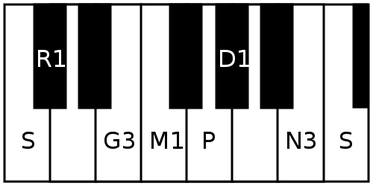
For the enlightened and initiated, this scale will also be recognized, theoretically, as the "Double Harmonic Major Scale", "Byzantine Scale", "Arabic Scale" or "Ionian b2, b6". In other words, it's a commonly uncommon mode, often heard stereotypically in old-timey Hollywood films, etc. to evoke a pseudo snake charmer type vibe.
However, in India, this Mela has an almost sacred and highly devotional meaning, as do each of the 72 Melakartas. It's also important to note that all forms of Indian music - Carnatic, Hindustani, as well as "Lite" or "Pop" styles - each employ a form melodic ornamentation known as "Gamakas", which is the defining element that sets it apart from Western music.
The purpose of presenting Mela #15 here as an example is not to repeat the wealth of information on Carnatic Music in general found on the internet, but rather to explore it's modal properties, and pick it apart, as one would a Major or minor derived (as well as synthetic) scale.
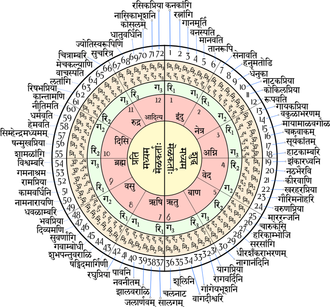
It is this concept of a fixed, unmovable sruti (or tonic) that is probably the most fundamental melodic difference between Carnatic and Western Music.
As we in the west are trained to hear a moving bass line and shifting tonalities, I became curious from the beginning as to the possibilities of breaking down a Melakarta to it's "modal" components. Since a Melakarta is a 7 note scale, I thought it would be interesting to check into it's "Dorian", "Phrygian", etc. equivalents, by changing the root or tonic (sruti) to each scale step.
This process, as I discovered recently, is known in Carnatic Music as graha bedham, or "position change". I am not aware of the history of graha bedham or how old it is in the annals of Carnatic Music. I would tend to guess that it is a fairly recent development and still somewhat theoretical and experimental, but I'm not entirely certain.
I do know, however, that it can lead to some interesting discoveries, both from within the Melakarta system and from without.
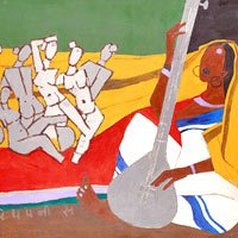
1/2 step - augmented 2nd - 1/2 step - whole step - 1/2 step - augmented 2nd - 1/2 step
This scale is built on two identical "harmonic" terachords. It can also be viewed as a Major scale with the 2nd & 6th degrees flatted. Also notice that, vertically, all notes in the scale are contained in successive Maj 7th chords built on the first two scale degrees, which are a half step apart (C-E-G-B & Db-F-Ab-C).
The fun part, is to play this scale against a drone, changing the drone note to each of the successive scale steps, thereby creating a new tonic and a new mode each time.
If you are not lucky to have access to a tanpura or a shruti box, there are numerous practice drone apps available for various devices, as well as several online sites offering musical drones - for free and for sale.
The downloadable pdf below contains Mela #15 written out, modally, in ascending and descending fashion in all 12 keys. It might be noted that "mode II" and "mode IV" form the Melakartas #72 & #57, respectively (both with raised 4th degrees (Ma or M2)). The other modes are not considered legitimate Melas, as they don't meet the criteria (either they don't contain a perfect fifth, contain too many of a particular swara (note) syllable, or none at all).
There is the equivalent of several books worth of material on Carnatic Music, in general, on Wikipedia. Several links are already given in the course of this post.
In the spirit of experimentation and discovery, have fun.

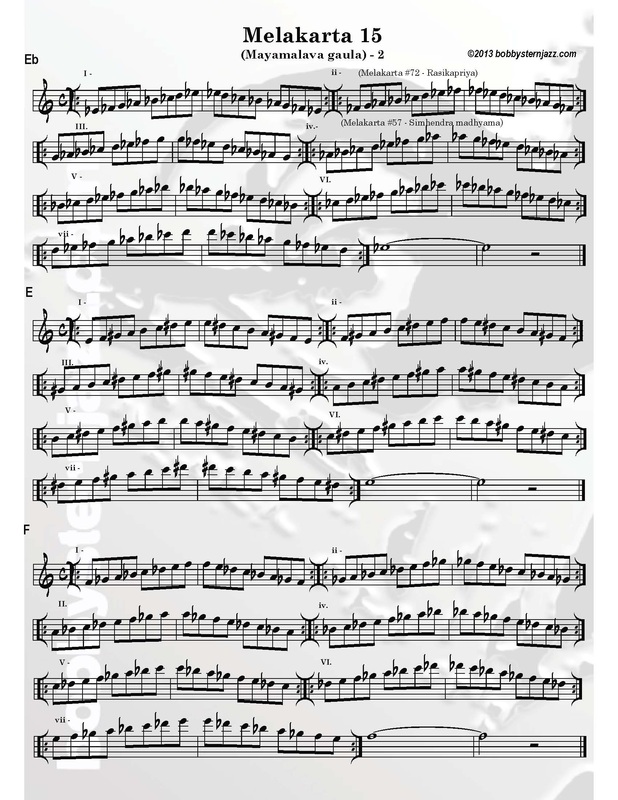
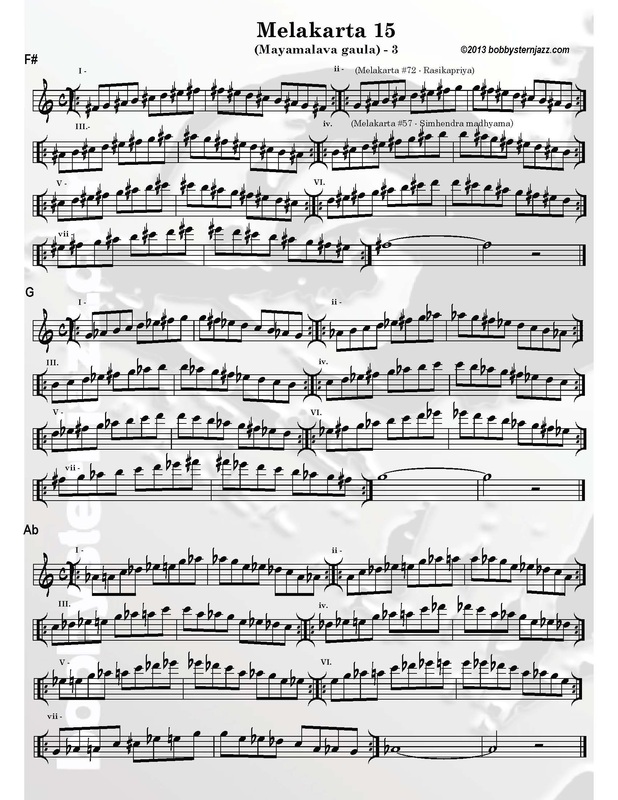
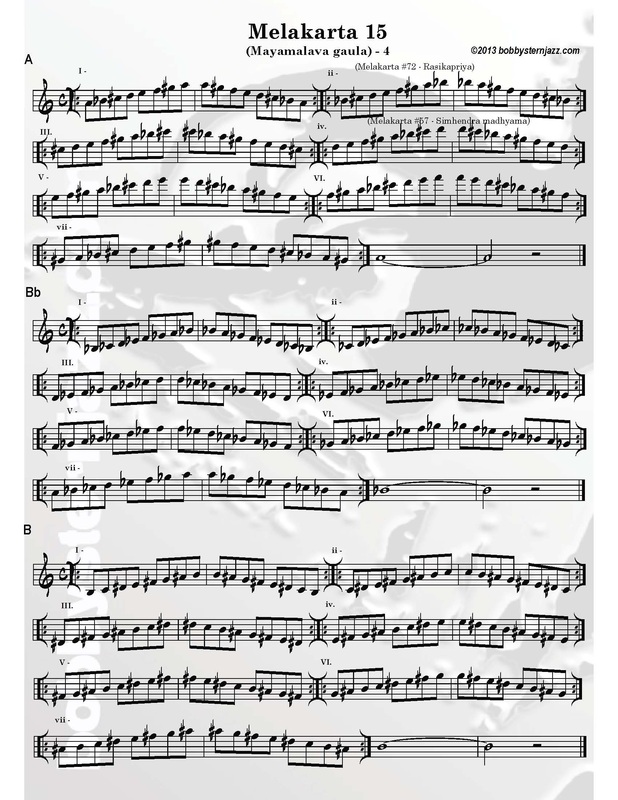
 RSS Feed
RSS Feed









